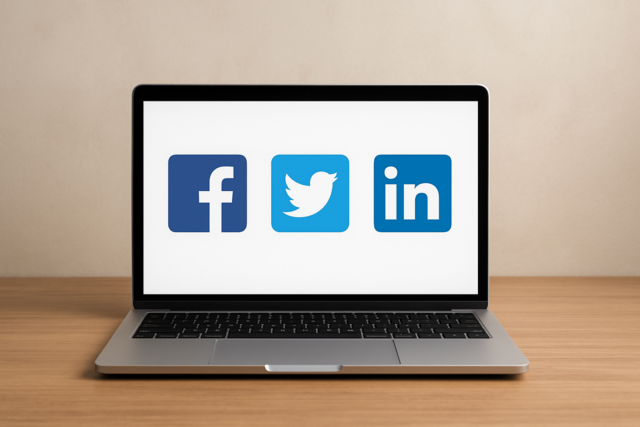Web 1.0 was the growth of online tools, a system in which information could be posted and shared around the world. This allowed people to have access to things they didn't have access to before, and this idea allowed for new possibilities.
Like any good idea, there became the reality that a next step needed to be taken. People weren't satisfied with just sharing information; they wanted more. This is where now often-used tools and platforms began to take shape.
Websites were the first steps, where people could access answers to questions and resources for study, or for personal learning. Many people think of these early days as being the time of books. There were pages upon pages of information being placed in an online environment.
You could type in a search online, find what you were looking for, and then move onto another search when the time was right. But what was missing was participation in the sharing. Though people who were able to build websites and photo pages were able to get into the new technology, those who were not as skilled began to feel as though they were missing out.
The Structure of Web 2.0
Web 2.0 is the structure in which engagement is encouraged and invited. Instead of just going to a website to read, you could then begin to interact via comments and sharing methods.
Instead of simply reading advertisements online, you could share this information with others, and you could even create your own ads through specialized services.
While encyclopedias of information existed online, Web 2.0 is where Wikipedia became a more interactive tool for sharing knowledge. You didn't have to rely on the words of others. You could then add your own information, building upon your experiences, and enhancing the experiences of others.
Though websites for personal use are still important, Web 2.0 introduced the idea of blogging, where anyone and everyone could stake a claim in the online landscape, and begin to create their own definition of what could be shared with the larger group of readers.
With each new innovation, and with each new interaction, the Web has become a place where everyone has a voice and everyone can get involved if they are so inclined.
Sharing is the main idea behind the concept of Web 2.0. Information becomes more fluid and more dynamic, with changes to information occurring instantly. When something new is learned, then this information can be shared, informing readers and allowing for larger changes in the idea of what it means to learn.
Not Just About Design
What's even more interesting to note is that Web 2.0 isn't just about the design of pages, or the way they look. Web 2.0 has become the standard philosophy for those who are interested in marketing ideas and products online as well.
Simple advertisements online became enhanced by the idea of sharing them with specific networks, building followers, and generating interest and dialogue.
Imagine what it would be like if Facebook were simply a site that posted information that no one else could comment on.
Web 2.0 is:
- Dynamic
- Interactive
- Participatory
- Freedom of information
It's more than just a "what" in the land of online sharing. It's also a "how" we choose to share information.
Dynamic content engages readers, and it encourages people to come back to sites to see what might happen or change next.
Interactive content allows people from around the world with different experiences and ideas to talk to each other. Global brainstorming becomes a realistic possibility, and it promotes the possibility of new ideas emerging from the unlikeliest of sources.
Participatory pages encourage people to get into the conversation, at any level they choose. They aren't just the reader; they're the user of the information.
When people are able to post what they want to post, the information they post becomes free and accessible to all. This release of data and ideas makes the Web more interesting and more helpful in terms of true learning.
It's no surprise that Web 2.0 is difficult for some to define, as many of us are simply used to this new revolution of ideas. It's what happens online, not just something that we need to learn.
We're already doing it. And the more you can learn about Web 2.0, the more effective you can utilize this platform for a number of end results.
Summary
Web 2.0 is a new way of engaging online, utilizing tools like blogging and podcasts to interact directly with other users in a dynamic, participatory, and flexible way.
No matter if you're a person with an idea, or a business with a product to share, it's become clear that conversing and interacting online is the new norm. Web 2.0 is about creating more than just static places online; this new idea is where true interaction begins.
Web 2.0 is where people begin to create a new vision of connection and of engagement.
While the beginning of Web 2.0 certainly occurred, it's not as clear when this moment was. One would think it would have been captured online, but there are disagreements about when the change occurred, and what it meant when it did.
For some, the history of Web 2.0 begins with the dot.com bust in 2001. It's not a leap to think that when the Web businesses of that time began to fill up the Internet, the thinking began to change. The audience began to realize what they were being presented, and they began to lose interest.
The information online was certainly helpful and it allowed people to gather knowledge more easily; but as with any growth, innovation becomes necessary in order to continue. People began to feel as though they were left out of the conversation, even as online companies and organizations began to feel the pressure staying relevant online.
People who didn't have the tech skills to be a part of the dot.com era became disinterested, and they began to shy away from the online world. Though email and reading websites were still important, this was not the only thing that people craved.
One of the reasons email is so effective is that it allows people to interact directly, offer feedback, and be a part of a conversation. Websites weren't able to do that, so designers began to look for other ways.
They realized that in order to keep people interested in online media, they would have to create functionality that did not yet exist. These professionals began to see that people who were engaged in the technology were going to keep using it, and this would, in turn, lead to more online growth.
Organizations that were unable to keep up with the changes in the Web were the ones that faltered, but those who were able to realize the potential of online tools, rose up and created a new revolution.
For many, the changes to the online world were subtle at first, as they were not completed overnight. As designers began to interact with each other, they began to see they could take their personal tools of collaboration and bring them into the online setting.
For a while, Web 1.0 and Web 2.0 were in existence at the same time, providing layers of experience for those who wanted to see how the Internet could help them. Some sites were static, while others began to have more functionality, and this allowed for larger changes to occur.
We can speculate that websites that were able to be more interactive got more attention than the ones that were not as interested in this type of interactivity. Because those sites and companies got more attention, they began to be seen as leaders in the online world.
And when one site begins to lead, others begin to follow.
Some of the earliest Web 2.0 tools were created with the basic computer user in mind. Since most people don't have the coding skills, or the time, to learn about Web design, the Web 2.0 functions needed to be easily accessible.
People needed to be able to use these tools immediately, instead of spending years learning about how to create them. Tools like Blogger, a blogging platform, began to emerge, showing people that they could create their own blog online, without having a tech background.
As more people created their own free blogs, other blogging platforms emerged, and then other blogging sites, then social media, etc.
In fact, the widespread appeal of the Web 2.0 is what has allowed it to continue to morph in new ways, and in new environments. Though there were once places to visit online, now there are things to be created, and locations to be established.
You can start conversations of your own, build communities of like-minded people, and you can start creating the online setting that you desire. And since you're connected to the entire online community, anyone who shares your vision (and many do) can also connect to you in this way.
Web 2.0's history is challenging to define because it continues to change and to grow. This is the exciting part about technology: how it continues to offer new ways of sharing what you know with the rest of the world.
What will Web 3.0 have to offer? Only time will tell.
Summary
With all of the talk about Web 2.0, one begins to wonder how it can add benefits to our life. After all, most of us are already immersed in the conversation in some way, but can this dialogue be directed to add value to our lives?
The main focus of Web 2.0 is to create engagement and interaction, but what do you do once the conversation begins? Like any talk between two people (or more), you are likely to take the information you gain to make your life better.
For businesses, Web 2.0 is not only a valuable marketing concept, but it also helps to create a long-term plan for success.
And yes, personal usage of Web 2.0 tools is also possible -- and enjoyable for those in your inner circle.
Why Web 2.0 Matters for Business
When you're building a business, or you're trying to maintain a business plan, you can't be shut out of the conversations your customers are having. Though you might think you have all the answers, the more you listen to your customers, the more you can find out about your true value.
Let's look at an example of selling a widget. Though you might have an initial idea about what this widget should do or provide, chances are good you won't be able to sell that widget forever. Once a person has bought the item, they're not going to buy another unless it breaks, or unless they still need it as an essential part of their life.
Innovation is the foundation for Web 2.0. What this platform does is create places where you can listen to your customers talk about your products. Say you start a conversation about your latest widget, and you get feedback from customers; this will allow you to understand where you can make improvements.
Your customers might be happy with what you've created, but then they realize they have another need in their life that requires another type of widget. If you weren't a part of this conversation, you might not know what the market was asking you to provide.
True, you might be able to speculate about the next item your customer might need, but why not hear it from the market directly? This allows you to have a greater chance of future success, while also allowing you to be immediately informed of things that aren't working.
Plus, businesses that are engaged online can also listen to their competition and keep up with their innovations. All of this information can help you make better products or attend to needs before anyone else in your market does.
- Better market research � In the past, you might have had to send out customer comment cards or other surveys to find out what customers thought of your product. Not all of these would come back immediately, and not all customers would answer these requests for feedback. Or you might do research that would only provide you a partial story of what was happening -- i.e. only positive feedback. With Web 2.0 tools, you can find out what's going on in your market, and when things are changing.
- Greater brand awareness � The more you can spread your business' message online, the more able you are to create a brand. A brand is the overall sense of what your company is, and what it has to offer. If you don't have a clear brand, you can become lost in the shuffle of other companies online. While a website is a good starting point, the more you can repeat your message (i.e. your brand identity) via Web 2.0 tools, the more people will begin to relate your company with its brand.
- Quicker response to problems � Though it might be more comfortable to focus on what the good parts of your company are, when you can access constructive (and even not constructive) feedback immediately, you can address the concerns. While customers can find ways to complain, when they engage in conversation online about your business, you can learn their true feelings and even ask for clarification. This way of interacting allows everyone to be a part of the company's growth.
- More visibility online � It's not enough to just be a business online. You need to be an active business online, and Web 2.0 allows you to do so. Because your customers aren't just on your website, you need to go to where they are and you need to be willing to converse with them there. The more you can use Web 2.0 tools, the more you can be in front of them when they're on the computer. You can begin to be a part of their web browsing, their email, and their social media time.
- Focused marketing efforts � At first, many businesses will try to market to everyone they can find online, hoping that they will reach enough people to create higher profits for themselves. But this is what caused the demise of Web 1.0. Businesses can't be everything to everyone. With Web 2.0, you can seek out the niche that you support, and you can interact directly with people who are interested in the specific products and/or services you provide. Since this is an audience that is already interested in what you have to sell, they're much more likely to become on-going customers.
Another benefit that is often overlooked is that Web 2.0 allows you to stay fresh in the business world. You don't want to be tied down by just one static website that lists your products. To stay profitable, you need to respond to the market, show that you're ready to innovate, and bring new ideas to your customers.
Think about what it would be like to have the same conversation with your best friend everyday. No matter how much you adore them, eventually, you would grow tired of the conversation � and customers are no different.
Though most of the emphasis on Web 2.0 is about businesses and how they can benefit, it's clear that personal interactions can also benefit from engagement tools.
Let's look at the usage of Facebook. While it can certainly be used as a business tool, think about how you share news with friends and family though this site as well. You don't do this just to share information either. You might post a status update in order to get advice about a problem, hear about how someone else is coping with a situation, etc.
You might talk about how you brought the kids to the park, and other parents might join in to ask what park you went to, how it was, and what other parks you might enjoy.
When you begin to share pieces of your life online with Web 2.0 tools, you can establish a sort of online support group and continuous gathering. You don't have to wait for the next phone call or email. You can share information in real time, allowing loved ones around the globe to be a part of your life, even if they can't be there to share all of your special moments.
Summary
There are a number of ways in which businesses and individuals can benefit from Web 2.0 tools. Engagement isn't just about selling products; it's about sharing information.

























